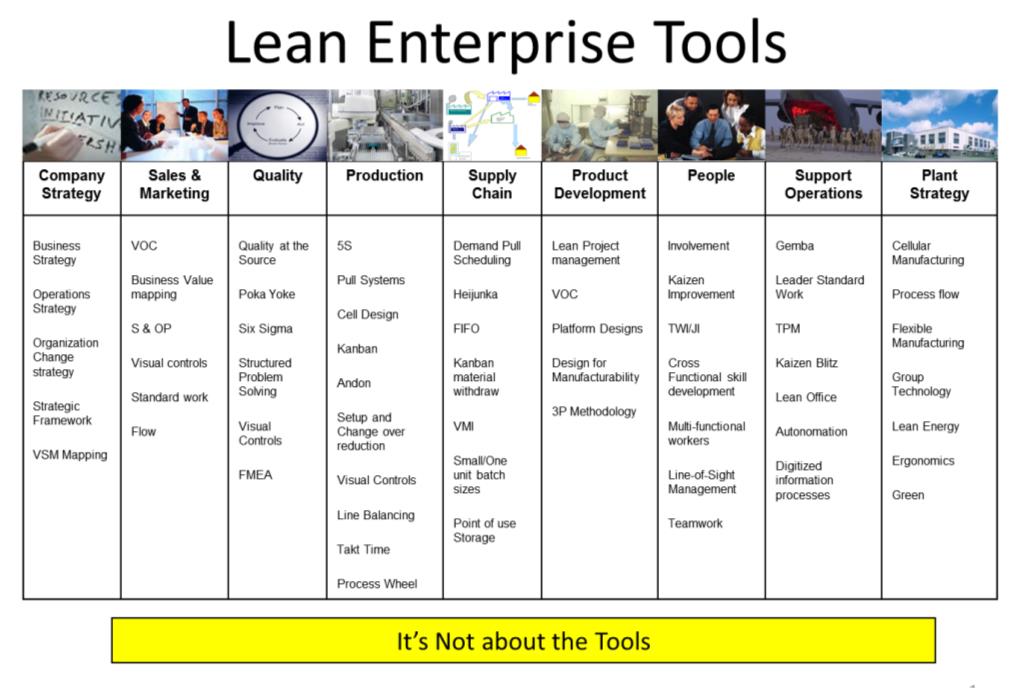Lean for the Long Term
What this book is about and how you can use it to your benefit? (Read Book Review)
Our main focus is to help you and your organization migrate from one kind of management approach to one that more effectively addresses today’s problems and equips your enterprise with capabilities for building greater competitive strength. Traditional organizations are slow to react to business changes. They do not engage or inspire people, and they do not show respect for people.
We seek to provide you with the information and understanding you need to help your organization move from a departmentalized, job-oriented, silo-infested work environment to a horizontal line-of-sight, customer-focused behavior we call a lean management system.
We leave the discussion about lean tools to others, instead focusing on making lean matter. Too many organizations fail to achieve or recognize the long-term, great accomplishments enabled through lean. You’ll discover how lean can yield significant, sustainable performance gains.
Our suggestions for achieving dramatic improvement are based upon living research. We have been involved in the study and application of lean for over 30 years, inside and outside many organizations that strive to achieve enterprise excellence and competitive advantage. Many companies that achieve some competitive advantage for the short term do so without venturing into lean at all. Others that utilize lean tools have not become lean, but are just doing lean stuff. In fact, most manufacturers are doing lean stuff today. Lots of techniques, programs of the month, tactics and strategies have been tried. Most do not get a significant return on their investment because doing lean stuff is not the same as becoming lean.
Becoming lean requires first a common language of business to be able to communicate which the lean community seems to delight in avoiding. Obscure Japanese terms that are everyday language in Japan are not familiar in English or other languages. Business professionals are not necessarily wowed by obscure terms. What gets their attention is sales, cash flow, margins and profits and profitable growth and it should be everybody’s business. We suggest everyone learn the financial fundamentals of business in chapter one and become knowledgeable of the company’s performance and how it compares to the best in their industry.
We propose a lean management system model that encompasses leadership, process and growth as the model to drive business performance. The core management model has five elements, Clarity of purpose, Standard Work, Transparency, Accountability, and Innovation. This management system is not your production improvement program; it is the system across the organization. Figure P.1 illustrates how the tools are applicable across the organization, however, as we stated previously we are not about the tools but about lean management and leadership. While the elements may sound easy, they are difficult to apply and have less impact if focused solely on operations. We illustrate several companies that have applied the model with outstanding success! However, what this means is our lean practitioners need to raise their game and become focused on the business model that the company employs to deliver customer value and the culture that supports the value delivery.

The inspiration for this book was observing companies that have made great progress and lean transformations and with leadership change lost interest. And leaders change regularly. The average tenure of a departing CEO has declined from approximately 10 years in 2000 to 8.1 years in 2012. This means in the S & P 500 there is an average of 63 leadership changes per year. Maintaining a customer focused Lean strategy and continuous improvement culture can become a challenge when management changes often, unless it has become an institutionalized company branded business management system for the company. Companies such as Danaher with their Danaher Business System which stayed the course over 25 years and profited handsomely through three CEO changes are rare.
What you will find in the book are several company approaches to successful transformation that translated to becoming Lean for the Long Term and the results that they have achieved. They have been successful because they have been diligent and been able to adopt and adapt a lean culture and management system across the enterprise, in all departments, functions and divisions as we have seen in Danaher, Toyota, Autoliv and others. The main goal is not to be Lean, but to be successful and achieve excellence for the long term. We believe Lean strategy is the best way to achieve this level of success! However, a lean strategy is more than continuous improvement programs and Kaizens. Innovation requires a business to continually challenge their business model, product offerings and technology in order to survive. We suggest there is no such thing as “sustainment” unless you’re dead. A lean management system is designed to build a culture of constant transformation. Otherwise the company becomes antiquated and obsolete. After all, of the original S&P500 company list in 1957 only 65 companies remain on the list. Extinction is an option.
If you want to skip through the book to address the topic from your vantage point, look at the chapter titles. If you are a board member, for example, read the chapter “What the Board should know about Lean.” If you are CEO, senior manager or lean practitioner, you should find a chapter that speaks to you. In a lean organization, everyone is a leader and has a vital role to play in Lean for the Long term and the viability of the business.
For every reader we suggest you use Chapter 9 as a guide and encouragement to build your own action plan based on those best practices we have highlighted. The focus here is almost entirely on leadership aspects of lean and the management systems. After all, as Peter Drucker described, management is the distinctive organ of all organizations.
Up until now there have been few, if any, discussions on lean as a strategy and management system. We hope you enjoy the book and find it inspiring to move toward a broader more strategic use of lean principles in your business. If you wish to contribute your thoughts we would enjoy hearing from you.
